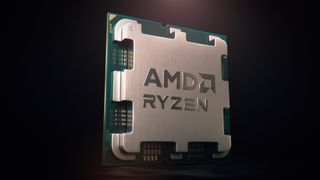New AMD add-on for overclocking utility allows further performance fine-tuning —Curve Shaper enables 15 voltage offset points
AMD users can now tweak how their CPU behaves in all conditions.

Ryzen 9000, which will contend with the best CPUs, will benefit from a new feature in Curve Optimizer. 1usmus, a third-party developer of Ryzen tuning software, reports that AMD is working on a new add-on for Curve Optimizer called Curve Shaper that significantly improves overclocking flexibility. Curve Shaper can set voltage offsets over the entire temperature range and load range of a Ryzen CPU, enabling higher frequencies in low/medium load scenarios.
Curve Shaper sounds like a very impressive add-on. Curve optimizer is already one of the best ways to overclock modern AMD chips. Curve optimizer uses AMD's Precision Boost algorithm to boost CPU clocks as high as possible within silicon limits. When a negative offset voltage is applied within Curve Optimizer, voltage and thermal stress are reduced, triggering Precision Boost to increase clock speeds beyond previous values due to the increased headroom available. It is better than manual overclocking since it allows Precision Boost to handle all the frequency action and boost the chip higher than manual overclocking would otherwise achieve.
Curve Shaper builds on Curve Optimizer's capabilities by allowing users to set specific voltage offsets across the entire temperature and load range of a Ryzen CPU. This is excellent for gaming and daily usage, as the chip often works in low- to medium-load conditions.
Instead of one voltage offset, users have access to 15 voltage offset points with Curve Shaper, split into five groups. Three are dedicated to minimum frequency operation, three more at low-frequency operation, three at medium frequency operation, three at high-frequency operation, and the last three are dedicated to max frequency operation. Each of the three offsets per group is dedicated to low-, medium-, and high-temperature operation. For instance, if the chip operates in a medium load condition but at high temperatures, you can set the exact offset voltage for that behavior. Or, say, the chip operates at max frequencies but at low temperatures (maybe it's on liquid nitrogen); there is also a specific offset voltage setting for that particular behavior.
With Curve Shaper, AMD Ryzen owners can control the chip's voltage in all conditions. It represents a fantastic upgrade for AMD enthusiasts who want to tweak their chip's performance as much as possible. The downside of Curve Shaper is that it significantly increases the complexity of overclocking a Ryzen CPU. Instead of stress testing just one offset voltage, users will need to stress test at least 15 different offset voltages if they can squeeze the maximum amount of performance from their chip without sacrificing stability.
It remains to be seen which AMD CPUs will support with Curve Shaper. Realistically, launch-day support may be limited to the Ryzen 9000 series, which is coming soon. Still, we hope AMD will also make this feature available for older CPUs, especially AMD's outgoing Ryzen 7000-series processors.
Stay On the Cutting Edge: Get the Tom's Hardware Newsletter
Get Tom's Hardware's best news and in-depth reviews, straight to your inbox.

Aaron Klotz is a contributing writer for Tom’s Hardware, covering news related to computer hardware such as CPUs, and graphics cards.
-
Aurn “The downside of Curve Shaper is that it significantly increases the complexity of overclocking a Ryzen CPU. Instead of stress testing just one offset voltage, users will need to stress test at least 15 different offset voltages”Reply
I wish there were a completely automated overclocking/undervolting feature that would do the testing for us and determine the best settings. Would that be feasible? -
nightbird321 Yeah, if someone can share a tool that can at least test cores individually and log problems, and maybe switch voltages in windows instead of BIOS, that would save a lot of time. I tried corecycler but the time commitment is ridiculous and my end result was slightly unstable but could never determine why and I ended up setting it to stock because performance gain was minimal to start with.Reply -
watzupken In my opinion, these chiplet based Ryzen chips works best when left at default or undervolted. I find it very difficult to cool chiplets due to the size. As a result, you may slap say an AIO water cooler on it and you can tell that the fan is ramping up sporadically due to the sudden spike in load. Delid may help, but its not for everyone.Reply
Most Popular





